Import / Export Relations between China and Thailand
As someone who is interested in the shipping industry between China and Thailand, you should be aware of the strong trade relationship between these two countries. In recent years, China has become one of Thailand’s major trading partners, with exports to Thailand amounting to US$78.48 billion in 2022.
Thailand’s growing trade ties with China can be attributed to their membership in the World Trade Organization (WTO) and their participation in regional trade agreements. Notably, Thailand is part of the Southeast Asian Free Trade Area (AFTA) and the ASEAN + 1 agreements, which also include China, Korea (Rep.), Japan, India, and Australia/New Zealand. These agreements have been instrumental in facilitating trade and reducing import duties between China and Thailand.
Ports and Airports Used for Shipping
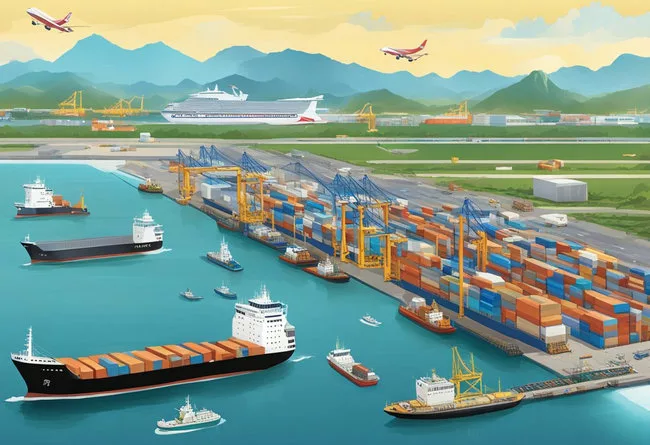
Flying Your Freight: Airport Guide
The main airports used for shipping from China to Thailand are:
- Suvarnabhumi Airport (BKK): Suvarnabhumi Airport is the main international airport in Thailand. This airport handles a significant share of air cargo between the countries, providing a reliable and efficient means of transportation.
- Shanghai Pudong International Airport (PVG): As one of China’s busiest airports, Shanghai Pudong International Airport offers a wide range of services and air freight options for shipping goods to Thailand.
Ocean Cargo Port Guide
The key ports involved in shipping between the two countries are:
- Laem Chabang (THLCH): Laem Chabang is Thailand’s largest and busiest port, situated on the east coast of the Gulf of Thailand. This port is well-equipped to handle shipments from China, offering various services and facilities for efficient cargo processing.
- Bangkok Port (THBKK): Bangkok Port is another significant port in Thailand that connects the country with China. Located on the west bank of Chao Phraya River, this port offers competitive rates and reliable shipping services.
- Qingdao (CNTAX): Qingdao is a major seaport in eastern China, playing a crucial role in facilitating trade with Thailand. The port offers regular and frequent shipments, with transit times ranging from 10 to 15 days to reach Thai ports.
- Shanghai (CNSHA): Shanghai is one of the world’s largest and busiest ports, connecting China with Thailand and other international destinations. It serves as a primary loading port for shipments to Thailand, offering a range of services to facilitate smooth shipping.
Shipping Methods and Shipping Terminology
When freighting from China to Thailand, it’s essential to understand various shipping terminology and options available to make the best decision for your business. Two primary methods of international shipping are ocean freight and air freight. Both options have their advantages and drawbacks.
- Ocean Freight is the most common method for shipping large quantities of goods. There are two options for containerized ocean shipping: Less than Container Load (LCL) and Full Container Load (FCL).
LCL shipping is a cost-effective option for businesses with smaller shipments. You can save on transportation costs by sharing container space with other shippers. However, remember that LCL shipping may require additional time to consolidate goods in China and Thailand.
FCL shipping grants you exclusive use of a 20ft or 40ft container to ship your goods. With FCL, you can seal the container at your manufacturing hub, and it will remain sealed until it reaches your arrival destination in Thailand, unless customs officials intervene. FCL often results in less handling compared to LCL, reducing the risk of damage and avoiding consolidation and deconsolidation costs.
The ocean freight transit time typically ranges from 12 to 15 days for this route. However, it’s important to note that the overall door-to-door transit time for shipping from China to Thailand usually ranges from 25 to 35 days.
- Air Freight offers a faster shipping alternative, suitable for smaller consignments and time-sensitive shipments. While air freight is usually more expensive than ocean freight, shipping small loads can be as cost-effective as ocean transport and offers several advantages:
Reduced transit time and fewer handling requirements, ideal for perishable or delicate cargo.
Higher airport and airline security compared to ocean shipping.
Possibly more economical for small loads, considering the cargo’s size and weight.
Lower insurance quotes, thanks to the short transport duration.
Air freight transit time is faster for shipping goods from China to Thailand. With daily direct flights available, the average transit time by air is just 1 day.
- Road Freight: For shipments between neighboring countries or where sea and air freight might not be suitable, road freight can be a viable option. You can choose between full truckload (FTL) and less than truckload (LTL) options, depending on your shipment’s size and requirements.\
Full Truckload (FTL) refers to the transportation of sufficient goods to fill an entire truck. In this scenario, the whole capacity of the truck is dedicated to a single shipment. This method is usually faster and less likely to cause potential damage to the goods since the shipment is not constantly handled or moved around.
Less Than Truckload (LTL) is used when the shipment does not require the full use of the truck. Here, multiple shipments from different senders are combined together and transported in the same truck. While this method can be more cost-effective, it might take more time for the goods to reach their destination due to the need for multiple pick-ups and drops.
- Express Shipping: If time is of the essence and you need your shipment to arrive as soon as possible, express shipping via courier services such as DHL, FedEx, or UPS might be the best choice. This method is well-suited for smaller packages or documents and offers the fastest transit times. However, it also comes with a higher price tag.
The transit times for shipping goods between the two countries vary depending on the mode of transportation and the departure city in China. For instance, ocean shipping from China to Thailand takes as fast as 10 days or as long as 31 days. Here are a few examples of shipping times:
- Shanghai to Bangkok: 14 days (LCL)
- Guangzhou to Bangkok: 12 days (FCL) and 13 days (LCL)
- Wuhu to Bangkok: 21 days (LCL)
- Shenzhen to Bangkok: 20 days (FCL)
- Ningbo to Bangkok: 31 days (FCL) and 15 days (LCL)
Keep in mind that these transit times are estimates and may vary. Generally speaking, ocean freight is slower than air freight. While it doesn’t offer the speed of air freight, it is more cost-effective. Please consider the extra time in China that your goods will require for consolidation with other shipments and the subsequent de-consolidation upon reaching Thailand. Partnering with an experienced freight forwarder can help you navigate shipping logistics between China and Thailand, ensuring you get the best rates, transit times, and guidance on importing/exporting.
Steps for Shipping from China to Thailand
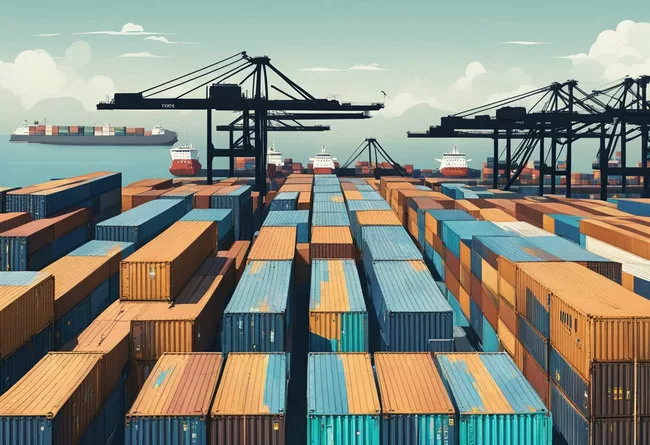
Step 1: Examine the items for shipping
Before you begin the shipping process, make sure that your items are allowed to be imported into Thailand. Double-check all of the products to avoid unexpected issues during shipment. Some items may be prohibited or restricted in Thailand, so ensure you comply with their import regulations.
Step 2: Choose a shipping method
There are several ways to ship from China to Thailand, including sea freight, air freight, road freight, and express shipping. Sea shipping typically takes 12 to 15 days, while shipping by air can take 1 to 3 days, depending on factors such as the type of goods, their value, and weight. Consider your needs and budget when selecting the best shipping option for your goods.
Step 3: Get a quote and select a shipping company
Select a reliable company with experience in shipping between China and Thailand to ensure a smooth process.
Step 4: Prepare your shipment
Once you have chosen a shipping company, prepare your shipment by properly packing, labeling, and securing your items. Ensure your shipment meets both China’s export regulations and Thailand’s import regulations to avoid delays and issues during transportation.
Step 5: Track your shipment
After your shipment has been picked up by the shipping company, monitor its progress using the provided tracking number. Stay in contact with the shipping company for updates on the status of your shipment, and be prepared for any potential issues or delays.
Handling of Shipping Cargo: How to Pack
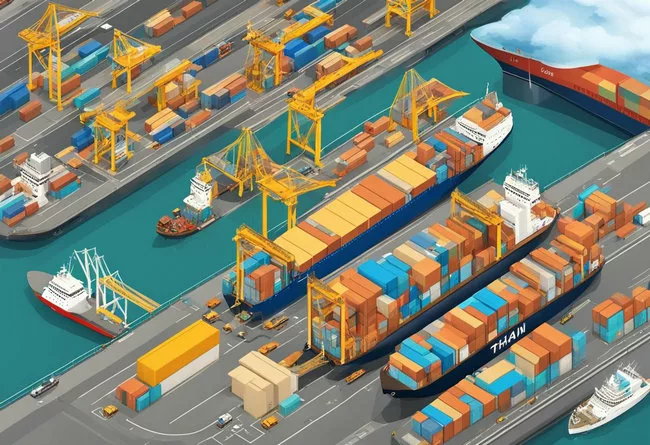
When shipping goods from China to Thailand, proper packing is crucial to ensure that your cargo arrives safely and in good condition. Following these guidelines will help you pack your cargo efficiently and with the necessary care.
First, gather information about the cargo details, including dimensions, weight, material, and any special requirements or regulations specific to the products you are shipping. This information will help you choose the right packaging materials and methods for your shipment.
For fragile products, use sturdy, high-quality boxes that are the appropriate size for the items being shipped. Make sure to provide enough padding with materials such as bubble wrap, foam, or packing peanuts to prevent movement and protect your items from damage during transportation. When placing items in the box, distribute the weight evenly and ensure there are no empty spaces that could allow the items to shift.
When shipping multiple items, consider using pallets or crates to consolidate your cargo. This can help protect individual items and make the handling process easier. Secure any loose items and reinforce the packaging with strapping or wrap to prevent the cargo from moving or coming apart during transit.
Label your packages clearly and accurately, including information such as the shipping address, contact details, and any special handling instructions. Additionally, attach any required documentation, such as customs paperwork or commercial invoices, to the outside of the package in a waterproof and easily visible pouch.
As you prepare your cargo for shipping from China to Thailand, remember to follow all regulations and restrictions specific to both countries. Ensuring that your packages are properly packed not only reduces the risk of damage during transit but also minimizes potential issues with customs clearance.
Documents Need to Prepare
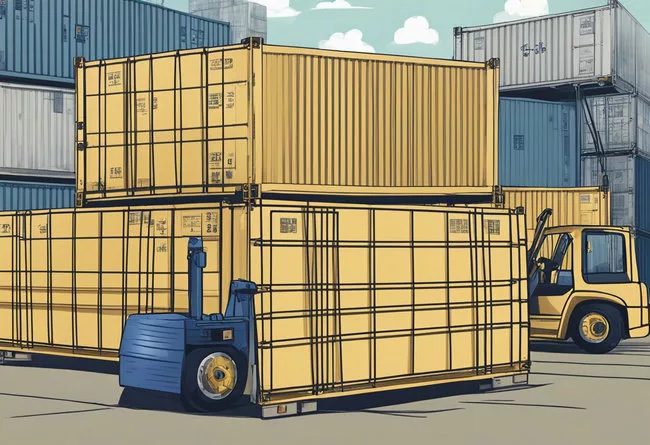
When shipping and importing from China to Thailand, it’s essential to have all the necessary documents prepared during Customs Clearance. Proper documentation ensures smooth customs clearance and prevents any delays or issues during the process. Here are the key documents you’ll need:
Commercial Invoice: You should prepare five copies of the commercial invoice in English. This document outlines the details of the transaction, such as product quantity, price, and terms of sale. Make sure the information matches the details in other shipping documents.
Packing List: The packing list describes the contents of your shipment, including the types, quantities, and weights of the items being shipped. This document helps customs officials verify that the shipment conforms to the commercial invoice and other documentation.
Bill of Lading or Air Waybill: Depending on the method of transport, you’ll need either a bill of lading (for sea freight) or an air waybill (for air freight). This document acts as a contract between you and the carrier, providing essential information about the shipment, such as the shipper, consignee, and destination.
Letter of Credit (if applicable): If you’re using a letter of credit as payment, ensure it’s included with your shipping documents. This document serves as a guarantee of payment from a financial institution upon meeting certain terms and conditions.
Import/Export License (if required): Some products may require an import/export license from the relevant agencies in Thailand. Check with the Thai customs department for specific requirements related to your goods.
Other Relevant Documents: Depending on the nature of your shipment, additional evidence such as a phytosanitary certificate or analysis certificate might be required. Make sure to research and obtain any necessary documentation for your specific goods.
- Certificate of Origin: A Certificate of Origin (CO) is a document that verifies the country in which a commodity or good was produced or manufactured. This certificate serves as a declaration to meet customs or trade requirements and confirms the ‘nationality’ of a product. It is widely used in international trade transactions and is crucial for certain free trade agreements.
China-ASEAN Free Trade Certificate of Origin
When shipping from China to Thailand, obtaining the China-ASEAN Free Trade Certificate of Origin (FORM E) is essential. This certificate currently applies to exports from Indonesia, Thailand, Malaysia, Vietnam, the Philippines, Singapore, Brunei, Cambodia, Myanmar, and Laos. As long as your products comply with the relevant provisions of the ASEAN-China Free Trade Area (ACFTA), this certificate will be applicable.
Before shipping your goods, your first step is to ensure that your products meet the main conditions for admission to the preferential treatment under the ACFTA. For example, the products should be wholly obtained or produced in the exporting member country or satisfy the relevant Product Specific Rules (PSRs) to qualify for this certificate.
Upon meeting these requirements, you can apply for the Certificate of Origin (Form E) through the proper authorities in your country. Remember that the issuing authorities may vary depending on the country of export, so it is crucial to consult the respective issuing body for the certificate application.
Once you receive the Certificate of Origin (Form E), make sure to include it in your shipment documentation. This certificate will enable you to enjoy tariff reductions under the ACFTA, potentially saving you both time and money in the shipping process. Carefully handling all these procedures will help ensure a smoother shipping experience from China to Thailand.
Cost-Effective Shipping Methods
When considering shipping cargo from China to Thailand, it’s essential to find cost-effective methods to ensure your business remains profitable. Two primary shipping methods, sea freight and air freight, offer the best blend of affordability, speed, and efficiency.
Sea freight is the most cost-effective option when shipping from China to Thailand. Chinese freight forwarders handle the transportation of your goods from the port of entry in China to the desired destination port in Thailand. Part of the reason for the affordability of sea freight is that various shipping routes are available. However, it’s important to remember that the cheapest option may not always be the fastest or most economical in the long run.
In contrast, air freight offers a quicker shipping time but at a higher cost. Depending on your specific needs, time-sensitive shipments or high-value goods may justify the additional expense of air transportation. Air freight DDP (Delivered Duty Paid) from China to Thailand means that all shipping fees, including import duties and taxes, are covered by the sender. This can save you time on customs clearance and ensure a smooth delivery process.
Comparing shipping times is a crucial factor when choosing between sea freight and air freight. However, for most businesses, the significant reduction in shipping fees associated with sea freight outweighs the extra time spent in transit.
Size and Weight of Your Shipment: The size and weight of your shipment can impact the cost significantly. Larger or heavier cargo will require larger containers and more space on the transport vessel, which can result in higher shipping costs.
Additional Costs: It’s crucial to factor in additional fees and taxes when importing goods between China and Thailand. These costs can include customs duties, import taxes, insurance, and handling fees. These fees vary between countries and can be based on the value of your shipment or its specific commodity code.
To get an accurate estimate of the shipping cost from China to Thailand, consider reaching out to freight forwarders in China or Thailand for quotes. Don’t forget to account for the various factors that can impact your overall shipping cost to ensure you make an informed decision.
PROHIBITED & RESTRICTED ITEMS
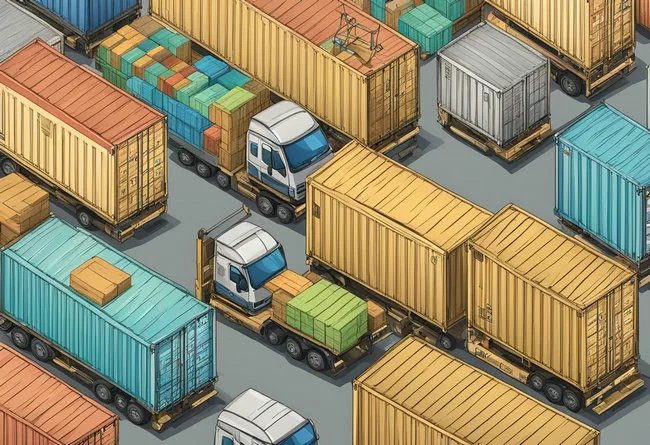
When shipping from China to Thailand, it is essential to be aware of the items that are either prohibited or restricted. The Thai Customs Department closely scrutinizes certain types of goods and strictly prohibits specific items from entering the country.
Prohibited Items: Certain items are completely forbidden for import into Thailand. These items include used motorcycles and parts, household refrigerators using chlorofluorocarbons (CFCs), refurbished medical devices, gaming machines, and computer peripherals. Importing or exporting these prohibited goods is considered an offense and subject to penalties under Thai law.
Restricted Items: There are also goods that have some restrictions when imported into Thailand. Such items may require additional documentation, permits, or even guarantee fees before they are allowed into the country. Examples of restricted items are firearms, ammunition, hazardous materials, some agricultural products, and certain animal or plant species.
Mailer Guidelines: Keep in mind that if an item is not allowed to be shipped domestically within the U.S., it is also forbidden to be shipped to any other country, including Thailand. Each country has its own rules on what is permitted and what is not, so familiarize yourself with Thailand’s specific regulations.
In conclusion, it is crucial to do thorough research before shipping any items from China to Thailand to ensure compliance with all applicable laws and regulations. Having a firm grasp on the prohibited and restricted items will help you avoid complications, delays, and potential penalties along the way.
Why choose Luckystar as your freight forwarder from China?
We have:
- The Quickest Mode of Delivery
- Reliable Delivery Timings
- Wide Delivery Coverage
- Efficient Tracking System
Established in 2022, Luckystar is an esteemed member of the Federal Maritime Commission (FMC) and operates as a Non-Vessel Operating Common Carrier (NVOCC). The company’s mission is to deliver superior service quality at reduced costs, primarily serving China, the USA, Canada, and Europe. With core team members boasting over 20 years of experience in logistics, Luckystar brings considerable expertise to the table. Since its inception, the company has been dedicated to offering global door-to-door transport and logistics solutions, emphasizing dependability, adaptability, and responsiveness.
If you’re looking for a freight forwarder to coordinate your shipments from China to Thailand, contact us! We guarantee to provide you with the most competitive price available.
